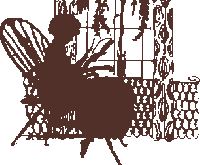America's Quilting History
Patchwork Souvenirs
by Merikay Waldvogel & |
In the midst of the Great Depression a grand fair was held in Chicago. The theme, Century of Progress, was perfect for the biggest and most widespread quilt contest ever held. The Sears National Quilt Contest attracted 25,000 entries. To manage such a large-scale contest a quilt had to make it through several levels. First quilts were judged at a local store, then at the regional level and the final competition at the fair.
"Patchwork Souvenirs" both tells the story of this contest and gives you a chance to peruse pictures of quilts that were entered in the contest. Some are lovely traditional examples while others are striking art quilts that make us realize quilting as an art is nothing new. I found the appliquéd and embroidered quilts that depict the Century of Progress theme to be particularly fascinating. Some of the details on these appliquéd quilts are incredible. After viewing these intricate themed quilts you will be surprised to discover that a traditional quilt actually won the contest.
On page 46 of this book Capper's Weekly is quoted describing the winning quilt this way.
It was the handsomest piece of needlework imaginable. Swathed in cellophane, it hung suspended full length in the display room of Sears and Roebuck's exposition along with dozens of other gorgeous specimens, and on it proudly fluttered the prize ribbon.... It was really the remarkable padded quilting which made this quilt so exquisite.
The book begins with a description of the Chicago Fair so you can imagine yourself there. It then goes on to tell about the making of some of the quilts along with a bit about the people who made them. This contest was not without scandal and the controversy over the winning quilt is an intriguing story in itself.
Although most women who entered a quilt in the contest had more optimism and enthusiasm than money, Margaret Caden, the winner of the contest fits a far different profile. A relatively wealthy woman for the times, she was a business women dealing in gifts including handmade quilts. Canden did not do the quilting herself but hired it out. This is exactly what happened in the making of the first place winning quilt. Apparently Margaret Caden did not hesitate to sign the form with Sears saying that she had personally made the quilt herself. The women who worked for her were afraid to say anything as they desperately needed the money they were earning in a time when a new job would have been practically impossible to find. Because of their fears it was decades later before descendents of these women contacted Sears with proof that the quilt was not made by Canden. Of course locals knew all along and liked to point out, "Margaret Canden did not know which end of a needle to thread." (page 59)
In "Patchwork Souvenirs of the 1933 World's Fair", Waldvogel and Brackman, not only tell about a significant event in America's quilting history but they also give us a sense of what it was like to be a quilter lifted up by enthusiasm of a quilt contest during the grim days of the depression.
© 2003 Anne Johnson (Do not reproduce any material from this site without permission.)

